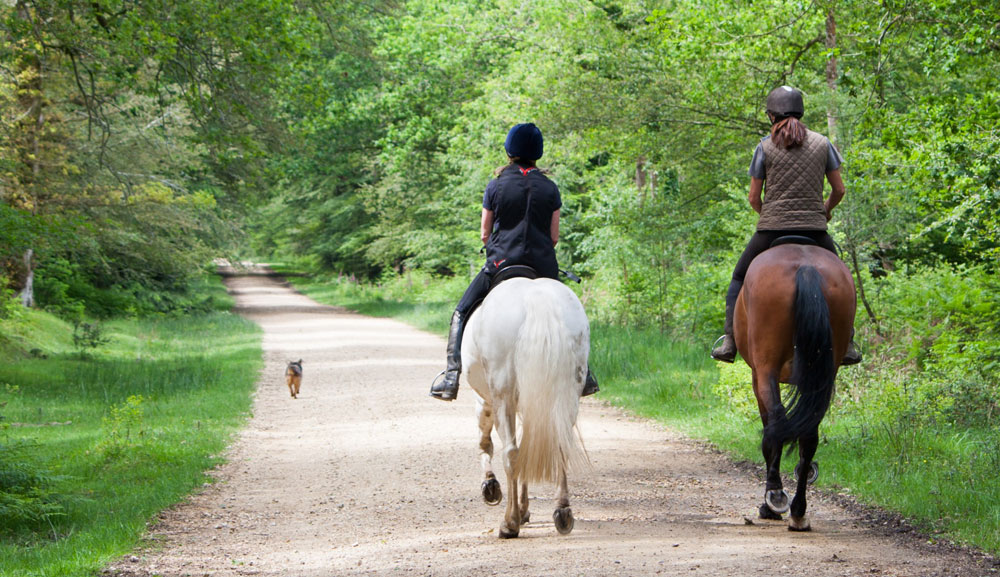It’s an age-old problem. Horse people often have the knowledge to teach friends and loved ones how to ride, but the relationships—including back-talk from children and egos from significant others—can make it difficult.
Ken Smith learned to ride from his parents while growing up in upstate New York and never stopped. In the early 1990s, he founded Ashland Farms in Wellington, Fla., with his wife Emily. Together with their son and daughter, the family is a fixture on the hunter/jumper show circuit, training everything from ponies to Grand Prix horses.
In the western world, Niki DeLancey grew up riding horses on a ranch in Colorado and opened DeLancey Stables in Laramie, Wyo., with her late husband in 1989. Since then, she’s been training barrel racing horses and offering western instruction in a variety of disciplines. Over the years, she taught her two sons to ride, and currently coaches her 12-year-old granddaughter.
1. Know How to Instruct
DeLancey’s first piece of advice is not to attempt to teach a family member to ride unless you have some sort of experience instructing. “You don’t necessarily have to have a degree in teaching, but you need to know how to teach versus just being a cheerleader.”
2. Make it a Family Affair
Both trainers agree that the No. 1 advantage to teaching your family members is the quality time.
“Make it family time together,” says DeLancey. “We often watch our children do sports. This is a sport that you can do with your kids.”
3. Be Sensitive and Stay Positive
Smith says the biggest difference between instructing his children versus his clients was the sensitivity factor. “They take things too personally from us,” he says. “They dwell on that a little more than the normal student.”
Smith’s eldest child Spencer, now 18, has found success in the hunter/jumper world, winning the 2014 United States Equestrian Federation Pessoa/U.S. Hunter Seat Medal Finals, placing fifth at the 2014 ASPCA Maclay Final at the National Horse Show, and helping secure the Team USA gold medal win at the 2015 Hollow Creek Farm FEI Young Rider Nations Cup.
Smith’s 12-year-old daughter Alexandra currently shows in children’s hunters.
“We’ve had good success because we’ve tried to keep everything really positive with both of our kids,” he says. “We tried to go out of our way to get the best horses that we could for them so they would have the best chances of doing well. We always believe in their goals, no matter how big.”
4. Don’t Allow Arguments
DeLancey taught her children as if they were paying clients, and she didn’t allow arguments. “You can’t say, ‘I told you to do this,’ or not to do that,” she says. “That’s a fault many parents have when they try to teach their child.”
With her granddaughter, she’s found pictures and video helpful to avoid arguments. “Rather than argue, I show her a video,” she says. The videos and pictures show the true story, and DeLancey can point out areas they need to work on.
DeLancey’s sons showed on the American Quarter Horse Association circuit and later in rodeos. Her granddaughter shows on the Wyoming Junior Rodeo Association circuit, where she’s won a number of divisional titles.
5. Offer Some Freedom
While Smith’s children participated in group lessons at the stables, he also allowed them some free time on the horses.
“We’re lucky because we have a lot of horses, and sometimes I let the kids learn a little bit on their own,” he says. “I learned a lot myself being trained that way. They can ride a lot of different horses and figure out those nuances instead of me trying to instruct them every step of the way.”
6. Welcome Outside Influence
Both trainers agree that supplementing your instruction can offer rewards and broaden a young rider’s horizons. Consider having riders they respect offer advice, or let them take occasional lessons or clinics with a top instructor.
“If you do go outside of your own family, pick an instructor who will be the right personality for your child,” Smith says. He chose more relaxed instructors who helped keep things fun for his highly-driven son.
7. Reap the Rewards
“The rewards definitely outweigh the negatives,” Smith says of instructing his children. “It’s fun to see everything from the little victories in training sessions to a big win at a show and be part of that as a family member. It’s extra special.”
When to Bring in the Professionals
There are many reasons to hire an outside instructor for your child or spouse. Perhaps their riding level has progressed beyond where you feel comfortable teaching, they are interested in another discipline, or they simply don’t listen to you.
“As a mom and a riding instructor myself, I suggest seeking outside instruction,” says Christy Landwehr, who has been teaching riding for more than 20 years and also serves as CEO of the Certified Horsemanship Association. “I honestly feel that whether it’s teaching your child or your spouse, sometimes the respect just isn’t there no matter how accomplished you are.”
If it’s time to consider an outside expert to instruct your family member, Landwehr says the first step is to find someone qualified. If the instructor is certified, find out what organization the certification is through, what was required, and what level they are certified to teach. If they aren’t certified, find out what qualifies them to be instructors.
“It may be their show record,” says Landwehr. “It may be the fact they’ve taken lessons themselves for years from many different people. It may be that they went to college in an equine-related field. All of those things are very valid, but the parent needs to do that research beyond location and cost.”
If the lessons won’t take place at your home, you should visit the location to assess how the horses are cared for and the safety of the equipment and facilities. It’s also important to find a good personality match for your family member.
Landwehr suggests going together to watch a potential instructor teach a riding lesson, and asking your child’s opinion. “The child needs to help make the decision as well as the parent,” says Landwehr.
Micaela Myers is the author of The Horse Illustrated Guide to Trail Riding and KNACK Leg and Hoof Care for Horses.
This article originally appeared in the March 2016 issue of Horse Illustrated magazine. Click here to subscribe!






